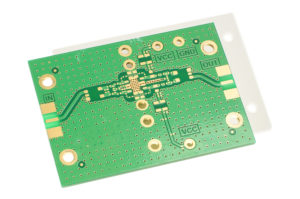Turn Your Big Idea Into a Prototype
Do you have the next great idea you are looking to execute for this next year? Have you had an idea for the next great invention swirling around in your head forever, well New Year’s is approaching. Is 2025 the year you finally turn your dream into reality and build your invention? Creating a new invention is hard work, but you’d be surprised by how many companies and vendors exist to help you along the way.
 A good example is, at ACME PCB Assembly, we can help you prototype the printed circuit boards your invention needs to function. We’ve worked with all sorts of entrepreneurs, inventors, and start-ups over the years. If you aren’t sure about the exact schematics of the PCBs that you need, that’s alright. We can help you every step of the way, from planning to designing, and actually building the circuit boards. Other vendors can assist you with the other parts of your product.
A good example is, at ACME PCB Assembly, we can help you prototype the printed circuit boards your invention needs to function. We’ve worked with all sorts of entrepreneurs, inventors, and start-ups over the years. If you aren’t sure about the exact schematics of the PCBs that you need, that’s alright. We can help you every step of the way, from planning to designing, and actually building the circuit boards. Other vendors can assist you with the other parts of your product.
Before you know it, you’ll have a prototype in hand, which will allow you to begin confidently pitching investors and getting your product to market. ACME PCB Assembly to be your assembly resource for prototype Printed Circuit Board Assembly (PCBA). PCB assembly service. Our certified IPC trainer in house to make sure that ACME PCB Assembly will do the quality prototype board build. We can handle prototype board build by hand from 1 piece though 50 pieces. ACME PCB Assembly also can handle your prototype PCB assembly from 1 piece prototype to 10,000 pieces production run through our FUJI SMT pick and place line.
We provide a complete suite of PCB Assembly Services, including rework and modification, BGA, SMT, Turnkey, Thru-Hole, Lead Free, and Prototype assembly, plus an extensive line of add-on services, such as Injection Molding and Metal Work & Finishing. ACME PCB Assembly has been providing Electronic Manufacturing Services (EMS) and Printed Circuit Board (PCB) assembly for 27 years.
Contact us today to get started prototyping the printed circuit boards you need.


 One of the most critical stages in a product’s lifecycle is the New Product Introduction (NPI) phase. This is the exciting yet challenging transition from concept to production, where your idea starts to take shape. At Yun Industrial / ACME PCB, we specialize in making this process seamless. With decades of experience, we’ve helped countless entrepreneurs, inventors, and startups prototype the printed circuit boards (PCBs) their inventions rely on.
One of the most critical stages in a product’s lifecycle is the New Product Introduction (NPI) phase. This is the exciting yet challenging transition from concept to production, where your idea starts to take shape. At Yun Industrial / ACME PCB, we specialize in making this process seamless. With decades of experience, we’ve helped countless entrepreneurs, inventors, and startups prototype the printed circuit boards (PCBs) their inventions rely on.
 PCB Assembly recommends you should perform a
PCB Assembly recommends you should perform a  Mass produced product is never perfect the first time.
Mass produced product is never perfect the first time.
 The environmental impact of PCB production is significant due to the use of raw materials, energy-intensive processes, and potential chemical waste. Without sustainable practices, PCB manufacturing contributes to resource depletion and environmental degradation. As businesses and consumers alike prioritize eco-friendly solutions, adopting sustainable methods is no longer optional but essential for the industry.
The environmental impact of PCB production is significant due to the use of raw materials, energy-intensive processes, and potential chemical waste. Without sustainable practices, PCB manufacturing contributes to resource depletion and environmental degradation. As businesses and consumers alike prioritize eco-friendly solutions, adopting sustainable methods is no longer optional but essential for the industry.


